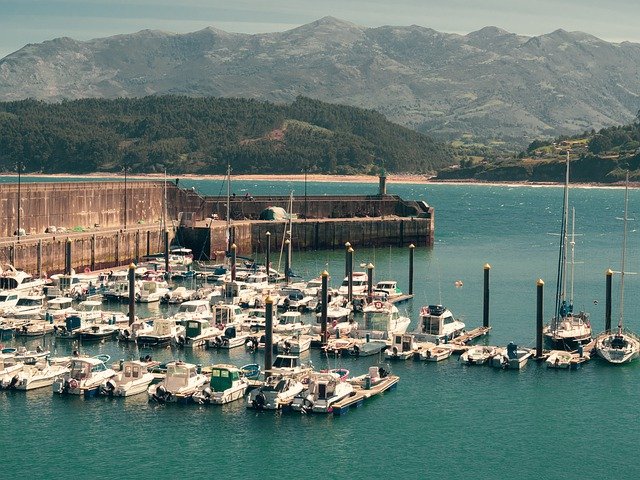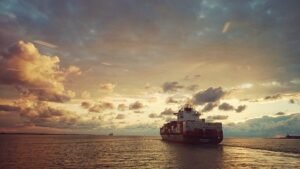Why Do Boats Require Ballast To Stay Afloat?
Balancing a boat is essential for keeping it afloat, but it is even more important for keeping everything steady on deck.
Why Do Boats Require Ballast to Maintain Stability?
A ballast, or weight in the hull of the ship, is the primary means by which sailboats retain stability in choppy waves or heavy winds. Besides that, a ballast keel, which is a fin-like blade on the bottom of the boat, will assist in keeping the vessel from tipping over when the sails are driven by the wind.
Most vessels would never be able to negotiate dangerous seas if they didn’t have ballast on board.
What exactly is ballast for a boat?
A boat’s ballast is often a metal weight or other heavy cargo that is put in the hull of a ship and sealed off, allowing the vessel to have weight on the bottom.
This offers stability by pulling the boat downwards into the sea, forcing the more dense water out to the edges of the ship, and allowing the boat to remain upright. As the ship cruises, the weight of the cargo stops it from tipping over.
Consider the image of a beach ball in a swimming pool for a minute. The force of a tap on a blown-up beach ball in water will cause the ball to twist, twirl, and potentially even go upside down as a result of the force.
But if you taped a rock to the beach ball’s interior bottom before attempting to twist it, the rock would seek to keep the ball stable by ensuring that it was always face the rock downward and toward the sea, instead than allowing the ball to twist, spin, or flip.
This is a very simplified description of how ballast may be used to provide a weight that can be used to keep a boat balanced in the water.
Do Boats Require a Certain Amount of Ballast?
Boats, particularly sailboats, need ballast to keep them from completely tipping over in certain scenarios — yet even with ballast, these vessels are still susceptible to tipping over.
As a result, knowing how much ballast a boat need is critical.
While it is tough to put a figure on it, the way that ballast works in many contemporary boats is that ballast is created using a water tank, which is difficult to put a number on as well. As a result, various sizes of boats will need varied quantities of water to fill their water tanks.
Smaller boats will need a bigger tank, while larger boats will require a smaller tank.
For example, a cargo ship hauling hundreds of tons of shipping containers will need a complicated system of piping and pumping water into and out of the ballast water tank at the bottom of the ship in order to maintain the ship’s stability.
A smaller sailboat, on the other hand, will have a less sophisticated, but no less important, ballast system.
In most cases, ballast weights up to half the weight of the boat, which is a significant amount of additional weight added as a result of the boat’s design. When using water ballast, the quantity of water or the size of the water tank is determined by the boat’s manufacturer.
What is a Water Ballast System and how does it work?
A water ballast system is the method by which water is controlled and filtered via a tank to ensure that the right quantity of water is continually utilized during specified scenarios.
We said in our post on water leaking into the bilge that boats will need that water be filtered out, replaced, cleaned, or otherwise examined on a regular basis to ensure that the boat does not begin to decay or sink.
The same is true of the ballast.
Several water ballast systems will filter in fresh water, filter out gray water, and adjust the amount of water in the tank.
Ballast systems are essential for maintaining appropriate balance on board and preventing rotting of ships’ hulls due to stagnant water.
Why Do Boats Require Ballast To Stay Afloat?
Why is it referred to as a “Ballast”?
“Ballast” is a term that dates back to the mid-16th century and is thought to be of Germanic or Scandinavian origin.
Ballast was employed in early shipbuilding to maintain adequate weight distribution by placing rocks, gravel, or sand in the bottom of the boat.
Until contemporary technology enabled shipbuilders to include a water tank and piping system into their designs, they had to be very cautious about the amount of weight they placed in the bottom of a boat and choose materials that would not harm the hull of the ship over time.
If the boat is small enough, ballast might be as simple as the cargo or the crew of the boat.
What is a Ballast Keel and how does it work?
The ballast keel is a “fin” or flat blade that is used to support the weight of a sailboat or big vessel.
Tight sailing conditions prevent the sailboat from being blown about and it also supports the weight of the ballast – which can be anything from a water tank to lead or any other kind of weight – that the ship needs to remain upright.
A sailboat’s ballast is used to compensate for the top-heavy weight of the mast and the forces acting on the sails.
The keel of a sailboat is very critical because it prevents the boat from sliding sideways as a result of the wind in the sails and keeps it going ahead. The ballast in the keel prevents the boat from tipping or heeling dramatically as a result of the wind’s pressures. These are two distinct but equally crucial roles.
What else can be done to improve the stability of a boat?
Understanding your boat’s center of gravity, as well as the items aboard that may have an impact on it, is essential for improving its stability.
For example, to ensure optimum stability, cargo and bulky things, as well as passengers, must be distributed equally throughout the boat.
Another example is that correctly guiding your boat against or into waves, rather than sinking on one side into deep troughs of waves, is critical to keeping the boat from tilting too much to one side or the other.
You’ll also want to make sure that anything you have in the bilge, such as an excess of water or oil, is properly cleaned out and filtered. Too much water may cause your ship to sink too far, and not enough water might make you too light to withstand the waves’ pounding.
At the end of the day, you want to make sure that you are not overloading your boat with passengers or goods, and that your weight distribution is equal and safe for everyone on board when the boat is in motion or on choppy seas.




